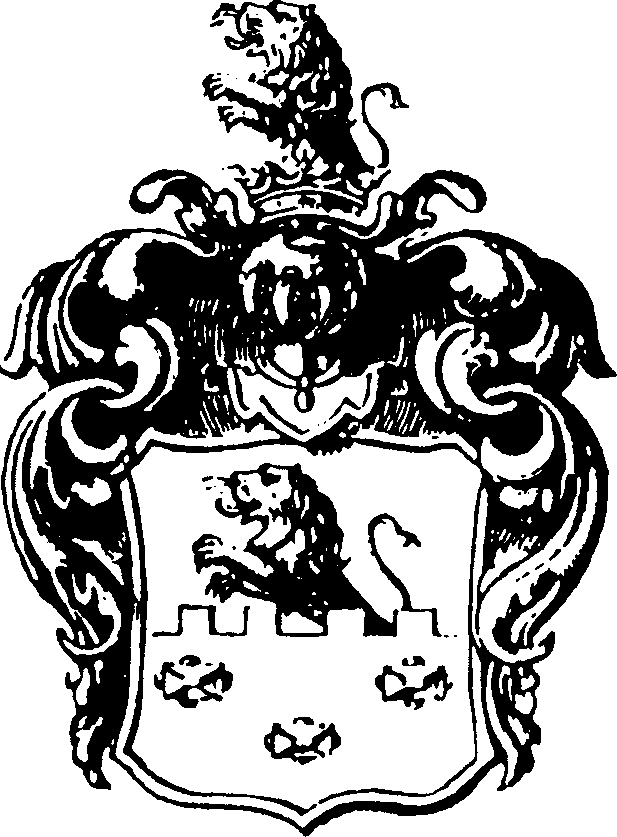Herb Zaremba
Research Heraldry Herb Zaremba
Herbarz Polski translation
Zaremba herb
 Excerpt from Herbarz Polski, by Kasper Niesiecki, S. J., Lipsk [Leipzig] edition, 1839-1846), volume X, pp. 80-89, translated by Leonard J. Suligowski. For each herb [clan shield, coat of arms] the blazon or verbal description of the arms is first given in authentic heraldic style, followed by a translation from the Polish description by Niesiecki. The right and left sides of a shield are identified from the standpoint of the bearer, i. e., the one holding the shield. His right would be your left and vice versa. The tinctures (colors) in heraldry are as follows: azure = blue, gules = red; sable = black; or = gold, argent = silver; vert = green. In heraldry all charges (pictures) on a shield are assumed to be facing dexter (right side) unless otherwise specified. In Polish heraldry all animals or birds are assumed to be in their natural coloring unless otherwise specified.
Excerpt from Herbarz Polski, by Kasper Niesiecki, S. J., Lipsk [Leipzig] edition, 1839-1846), volume X, pp. 80-89, translated by Leonard J. Suligowski. For each herb [clan shield, coat of arms] the blazon or verbal description of the arms is first given in authentic heraldic style, followed by a translation from the Polish description by Niesiecki. The right and left sides of a shield are identified from the standpoint of the bearer, i. e., the one holding the shield. His right would be your left and vice versa. The tinctures (colors) in heraldry are as follows: azure = blue, gules = red; sable = black; or = gold, argent = silver; vert = green. In heraldry all charges (pictures) on a shield are assumed to be facing dexter (right side) unless otherwise specified. In Polish heraldry all animals or birds are assumed to be in their natural coloring unless otherwise specified.
Blazon of the Zaremba Clan Shield
Arms: per fess embattled, murray and argent. A demi lion rampant issuant sable, langued gules. In base three diamonds 2 and 1 garnished or. For a crest: out of a ducal coronet a lion as in the arms.
On a brown background, there is an incomplete or half lion, black in color, with its tongue hanging out, the forepaws visible so that the left is slightly above the right, and the tail upturned; the lion is leaping to the right from the top of a white wall with four battlements. Set into this wall are three stones of gold, or rather, garnished in gold, two alongside each other, and one below. Upon a crowned helmet is a similarly styled lion. This is how the arms were described by Paprocki in his work Gniazdo cnoty [Cradle of Virtue], pp. 801 and 1176, and in O herbach [On Clan Shields] on p. 457, by Okolski in Vol. 3, p. 319, in Klejnoty, p. 90, and by Bielski on p. 90. Paprocki says the lion faces left on the shield and on the helmet. Okolski says the lion faces the right side and that there are four stones on the wall, whereas Paprocki says only three.
As to the origins of this clan sign, Paprocki, citing Długosz, says only that it was brought to Poland from Germany during the reign of Boleslaw Wry-mouth [1102-1138]. Okolski understands rather that it is from Bohemia, where families can still be found who bear arms with a lion and call themselves Zaremba. He also gives an earlier time for the shield's arrival in Poland, asserting on the basis of some manuscript that among the twelve palatines who ruled Poland in pagan times there was a Zaremba with this clan shield.
Bearers of These Arms
| Bielakowski | Jablonowski |
| Bielawski | Jaraczewski |
| Boxycki | Jastrzebski |
| Bulakowski | Noskowski |
| Celinski | Rudzienski |
| Cerekwicki | Skrzynski |
| Cielecki | Suchorzewski |
| Drzewoszewski | Tymieniecki |
| Ginet | Zajaczkowski |
| Gorzewski | Zaremba |
| Grabowski |
Kuropatnicki and Malachowski also include the family of Gimel among those using this clan sign.
The Zaremba family, of Zaremba arms, in Kalisz province, thus named from their arms or from the properties that comprised their inherited estates, signed their names with various distinctions: Zarembas from Komorów, Tuliszków, Grabów, etc., but most often from Kalinowa in Sieradz district, near Sieradz, as you will see below.
[Editor's Note: Niesiecki proceeds to give a very long account of individuals who were, or may have been, members of the Zaremba noble family of Kalisz and Sieradz provinces. While fascinating, the passage is too long to repeat here, especially in view of its dubious relevance to our readers. Those interested in its contents should contact the editor.]
Copyright © 2001 Leonard J. Suligowski. Used by permission. This article originally appeared in Rodziny (Winter 2001), the journal of the Polish Genealogical Society of America.
;
